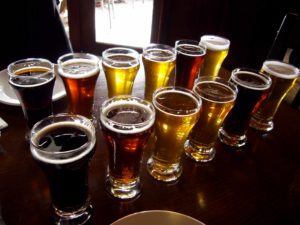In 2013 I decided to quit my career in astrophysics, move back “home” and become a data scientist. The blog post I wrote about my decision was probably my best read publication as a professional astronomer and it was moving to read all the reactions from people who were struggling with similar decisions. I meant every word in that blog post and I still agree with most of what I said. Now, 7 years after the fact, it is time to confess: I deeply regret quitting.
This post is meant to give my point of view. Many people who left academia are very happy that they did. Here I present some arguments why one might not want to leave, which I hope will be of help for people facing decisions like these.
I miss being motivated. In the first few years after jumping ship many people asked me why I would ever wanted to not be a professional astronomer. I have always said that my day-to-day work wasn’t too different, except that what I did with data was about financial services or some other business I was in, rather than about galaxies and the Universe, but that the “core activities” of work were quite similar. That is kind of true. On an hour by hour basis, often I’m just writing (Python) code to figure things out or build a useful software product. The motivation to do what you do, though, is very very different. The duty cycle and technical depth of projects are short and shallow and the emphasis of projects is much more on getting working products than on understanding. I am doing quite well (in my own humble opinion), but it is hard to get satisfaction out of my current job.

I miss academic research. The seeds of astronomy were planted at very young age (8, if I remember correctly). The fascination for the wonders of the cosmos has changed somewhat in nature while growing up but hasn’t faded. Being at the forefront of figuring things out about the workings of the Universe is amazing, and unparalleled in any business setting. Having the freedom to pick up new techniques that may be useful for your research is something that happened to me only sporadically after the academic years. The freedom to learn and explore are valuable for creative and investigative minds and it doesn’t fit as well in most business settings that I have seen.
I miss working at academic institutions. The vibe of being at a large research institute, surrounded by people who are intrinsically motivated to do what they do was of great value to me. Having visitors over from around the globe with interesting, perhaps related work was a big motivator. That journal clubs, coffee discussions, lunch talks, colloquiums etc. are all “part of the job” is something that even most scientists don’t always seem to fully appreciate. Teaching, at the depth of university level classes, as a part of the job is greatly rewarding (I do teach nowadays!).
I miss passion and being proud of what I do. The internet says I have ”the sexiest job of the 21st century”, but I think my previous job was more enjoyable to brag about at birthday parties. I can do astro as a hobby, but that simply doesn’t give you enough time to do something substantial enough.
I don’t miss … Indeed, the academic career also had its downsides. There is strong competition and people typically experience quite some pressure to achieve. The culture wasn’t always very healthy and diversity and equality are in bad shape in academia. Success criteria of your projects and of you as a person are typically better motivated in business. The obligatory nomadic lifestyle that you are bound to have as an early career scientist were a very enjoyable and educational experience, but it can easily become a burden on your personal life. The drawbacks and benefits of any career path will balance out differently for everybody. If you get to such a point, don’t take the decision lightly.

The people who questioned my decision to become an extronomer were right. I was wrong. It seems too late to get back in. I think I have gained skills and experience that can be very valuable to the astronomical community, but I know that that is simply not what candidates for academic positions are selected on. On top of that, being geographically bound doesn’t help. At least I will try to stay close to the field and who knows what might once cross my path.

















